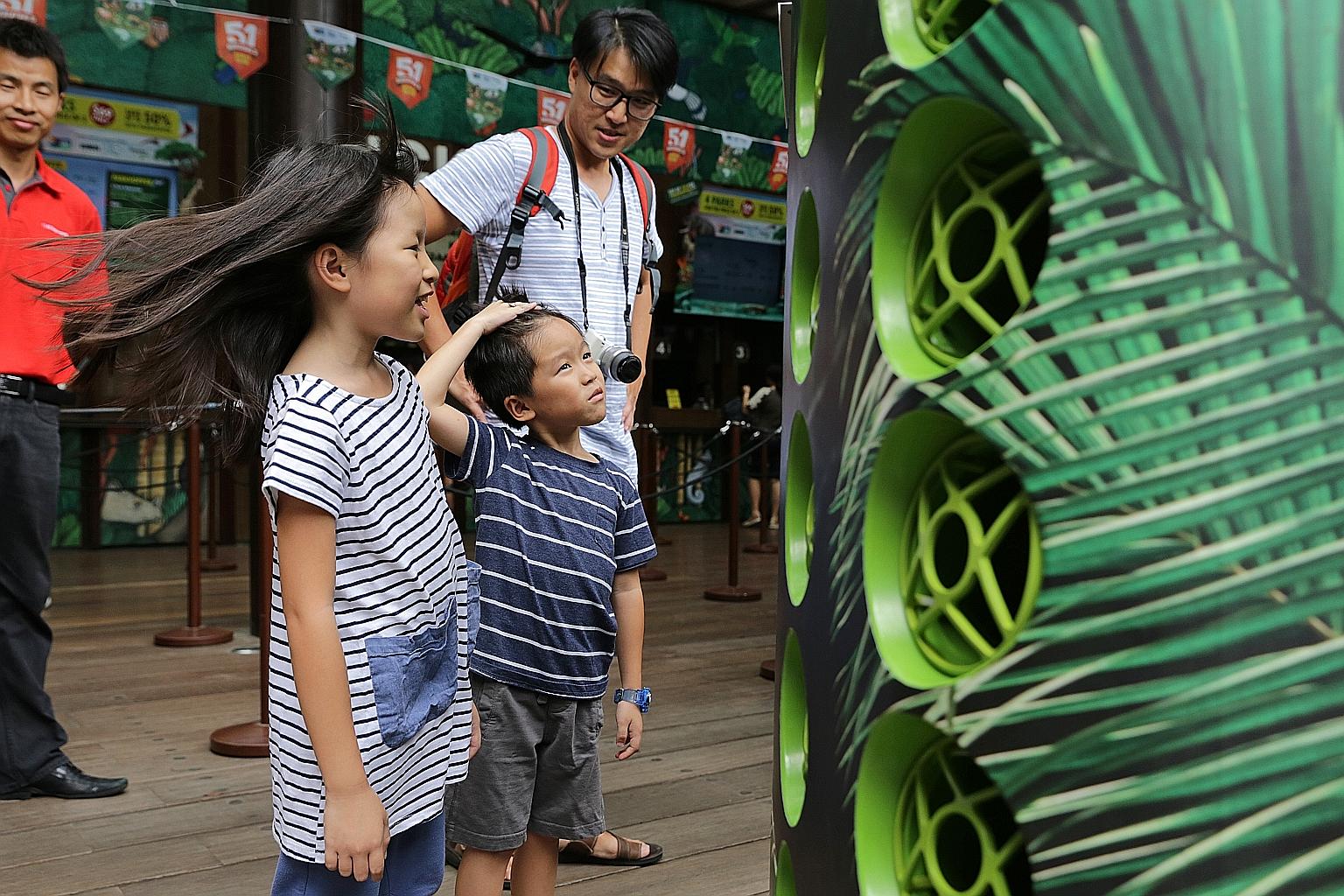Outdoor cooling system on trial at zoo
S'pore-designed outdoor cooling system now on trial uses 80% less energy than air-con
Sign up now: Get ST's newsletters delivered to your inbox

Steffi Teo, eight, and her brother, Leroy, six, enjoying the breeze from the Airbitat Smart Cooler. With them is their father, Mr Steven Teo, 38. If the trial at the zoo's ticketing area is successful, cool zones will be set up at all four wildlife parks.
PHOTO: TIFFANY GOH FOR THE STRAITS TIMES
Tiffany Fumiko Tay
Follow topic:
If a visit to the Singapore Zoo has been a hot and humid affair for you, here's some good news: There are plans to install a new outdoor cooling system in some areas of the park, which could cool air to 24 deg C.
The Airbitat Smart Cooler, developed by Innosparks, an ST Engineering subsidiary, was unveiled at the zoo yesterday at a media briefing.
Each unit, about the size of a refrigerator, blows out cool air to about 5m to 10m, and can cool an area of about 55 sq m, slightly smaller than a three-room HDB flat.

The cooler is eco-friendly, uses 80 per cent less energy than an average air-conditioning unit and does not produce heat, unlike air-conditioning.
Four units have been placed in the zoo's ticketing area since Tuesday for a six-month trial. If successful, 80 to 100 units will be installed in "cool zones" in all four of Mandai Park Holdings' wildlife parks: the Singapore Zoo, River Safari, Night Safari and Jurong Bird Park.
The cool zones include areas such as ticketing counters and restaurants, said Mandai Park Holdings group chief executive officer Mike Barclay.
"Singapore's outdoor heat and humidity can discourage our guests from extending their stay. We would like to address this heat issue in a sustainable, energy-efficient manner," said Mr Barclay, referring to the use of the Airbitat cooler.
He said that it would be impractical to cool all areas of the parks, given their vast size.
"If we can mark cool zones on the map where people can stop and eat lunch or sit down and recharge, people may stay longer," he said.
While a timeline for the rollout and costs have not been determined, Mr Gareth Tang, the project's engineering lead and general manager for Innosparks, said cost-effectiveness is a key consideration in cooling large outdoor spaces.
An Airbitat unit costs $2.50 a day to run, while an air-conditioning unit with similar capacity costs about $12.50, said Mr Tang.
The machine is built around a "cold water core", where water is circulated and chilled through an evaporation process. Warm air is drawn in and cooled by passing through the running water.
Sensors monitor the environmental temperature and humidity, and determine the temperature output.
The coolers have been in development for 18 months and are expected to go into mass production next year, said Mr Tang.
Other suitable locations for deploying the coolers include semi-open industrial spaces, such as aircraft hangars, which are not suitable for air-conditioning.
"We want to encourage the use of sustainable cooling and pumping less heat into the environment," he said.
Dr Michael Chiam, senior tourism lecturer at Ngee Ann Polytechnic, said that given Singapore's warm weather, the proposed cooling zones would significantly improve visitor experience.
Account executive Jane Lau, 41, who was queueing in the zoo's ticketing area yesterday, said that the breeze from the Airbitat units placed there was a welcome respite from the heat.
"My two boys... always complain that it is very hot. If only the coolers can be placed at more places in the zoo."

